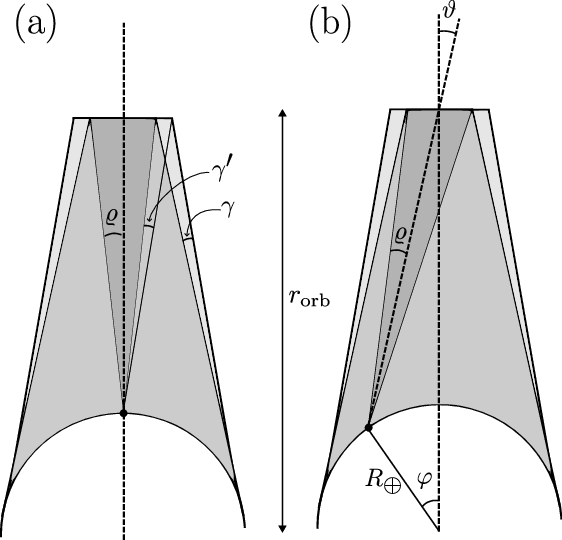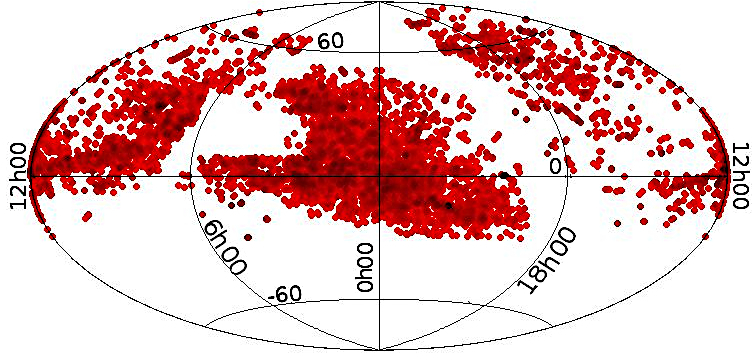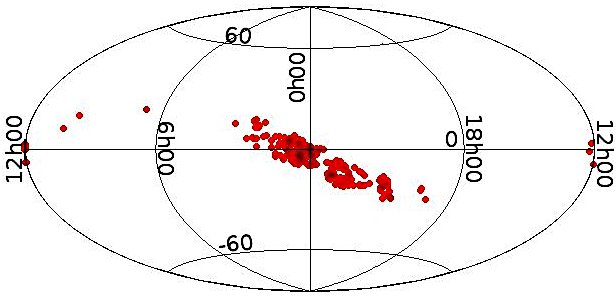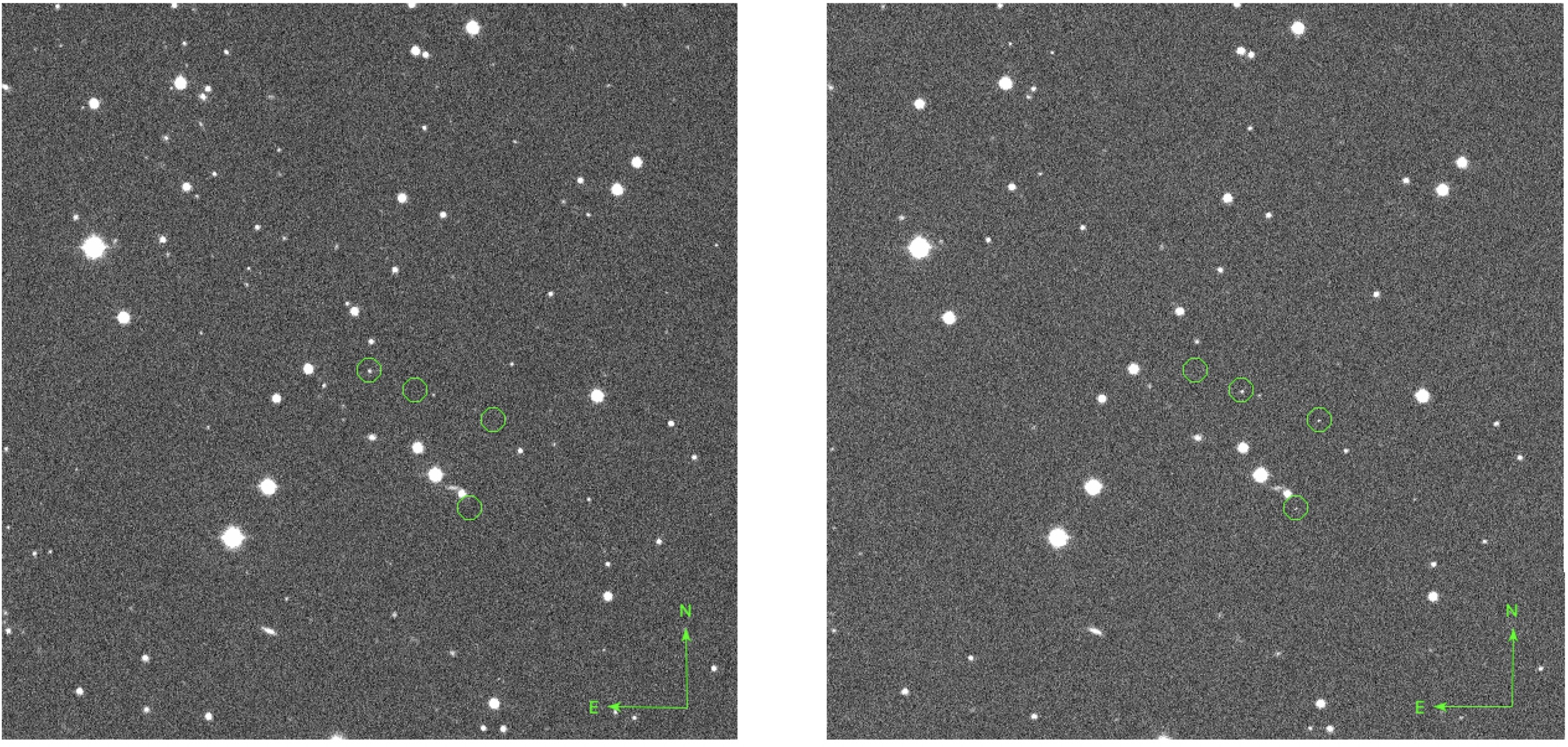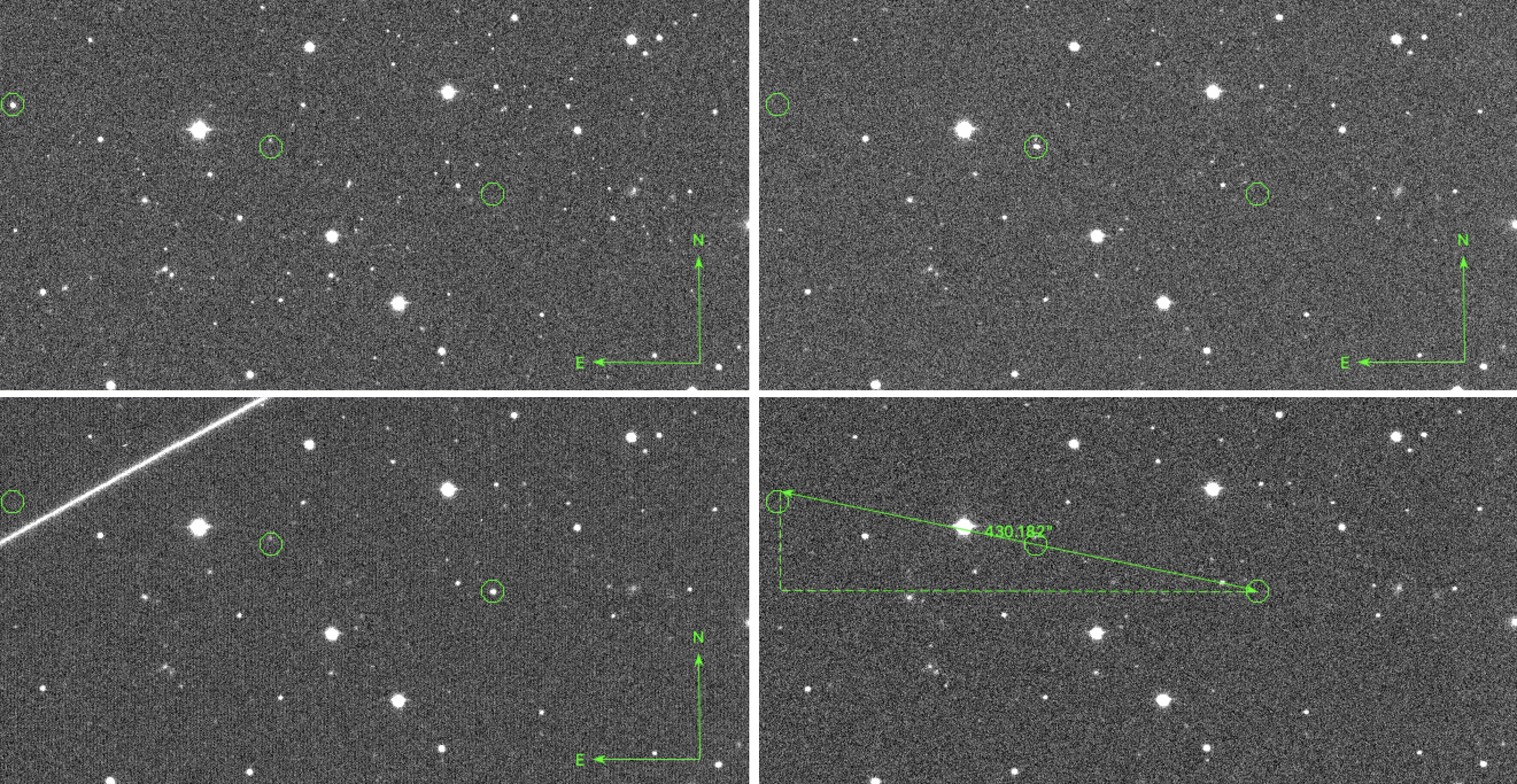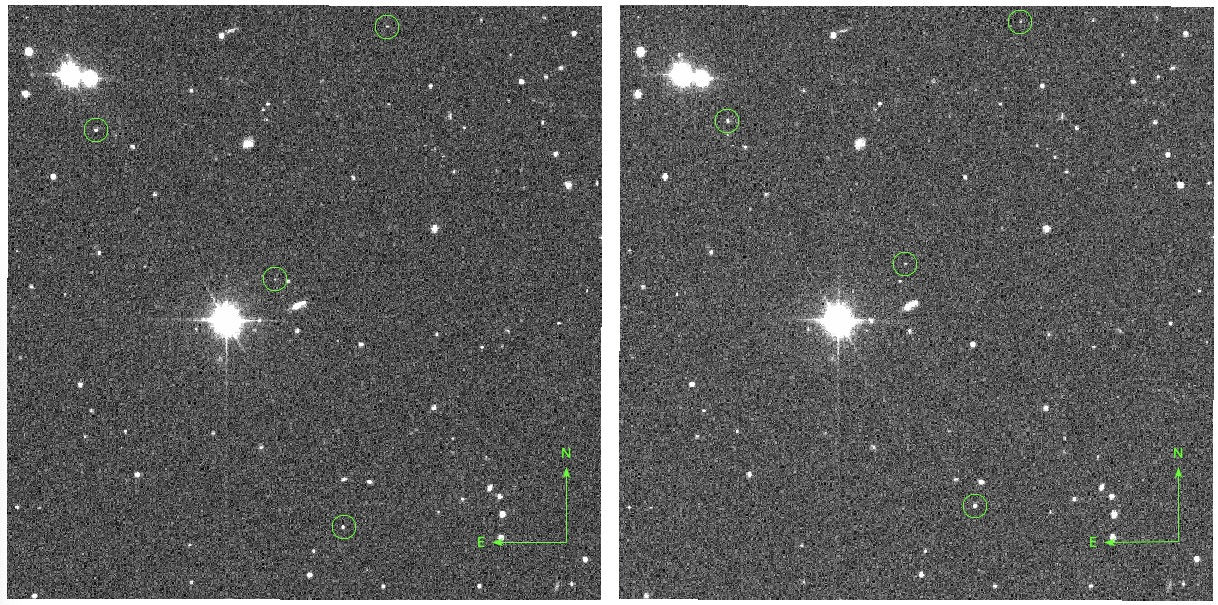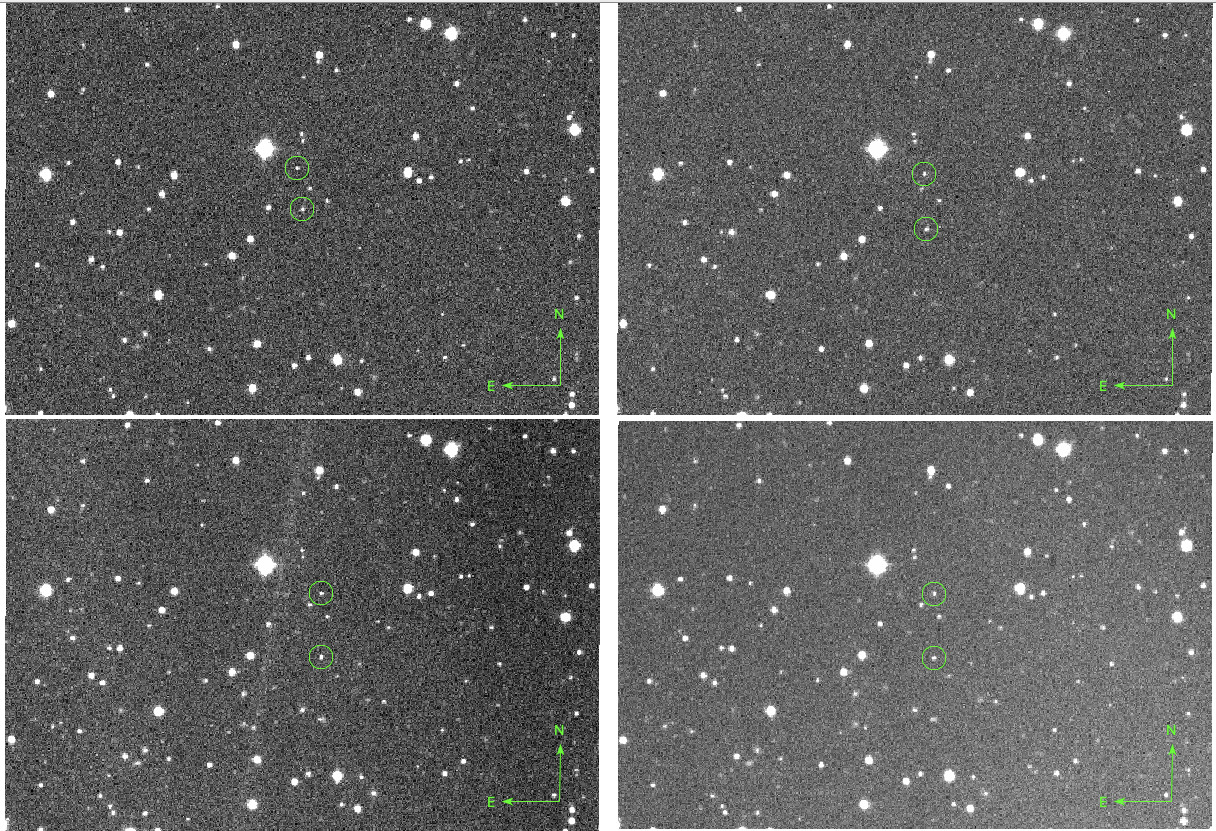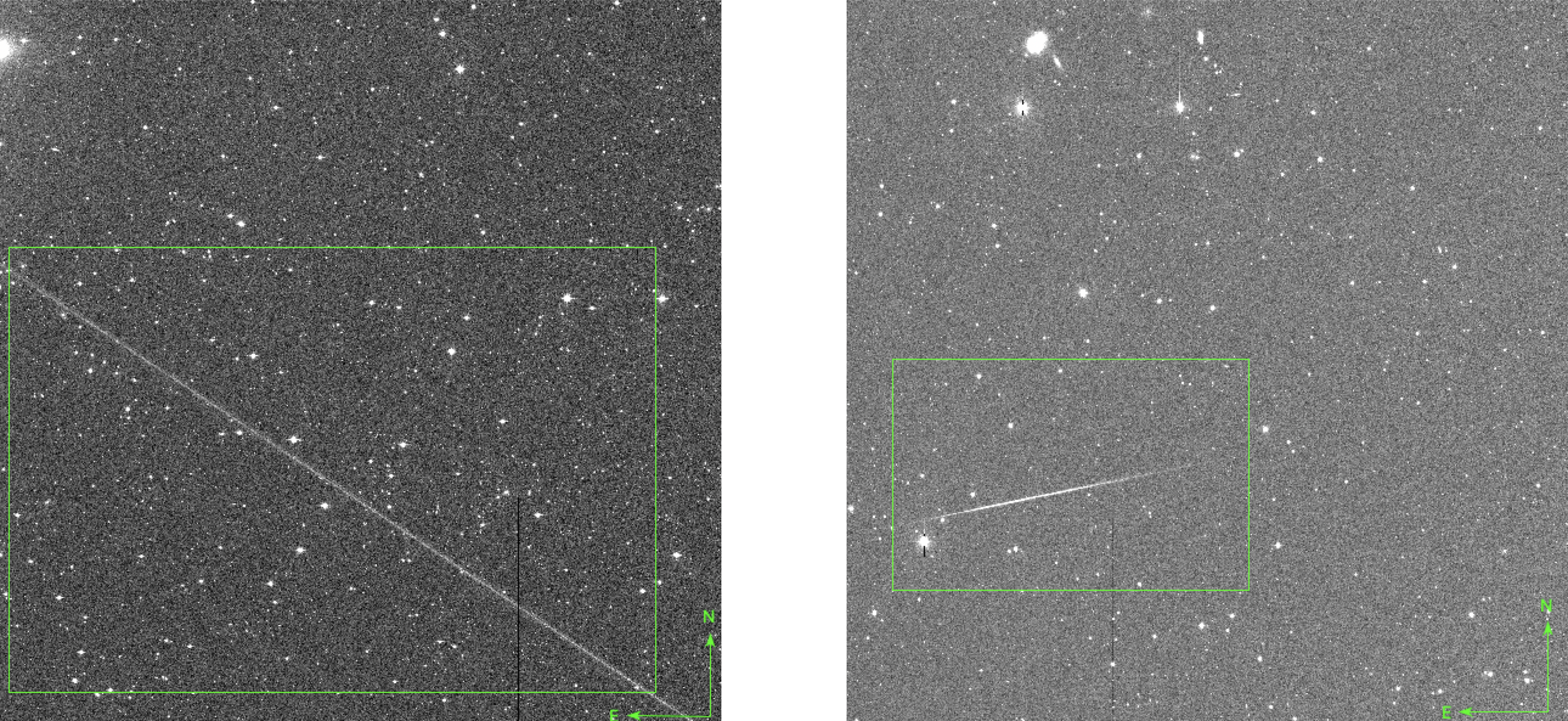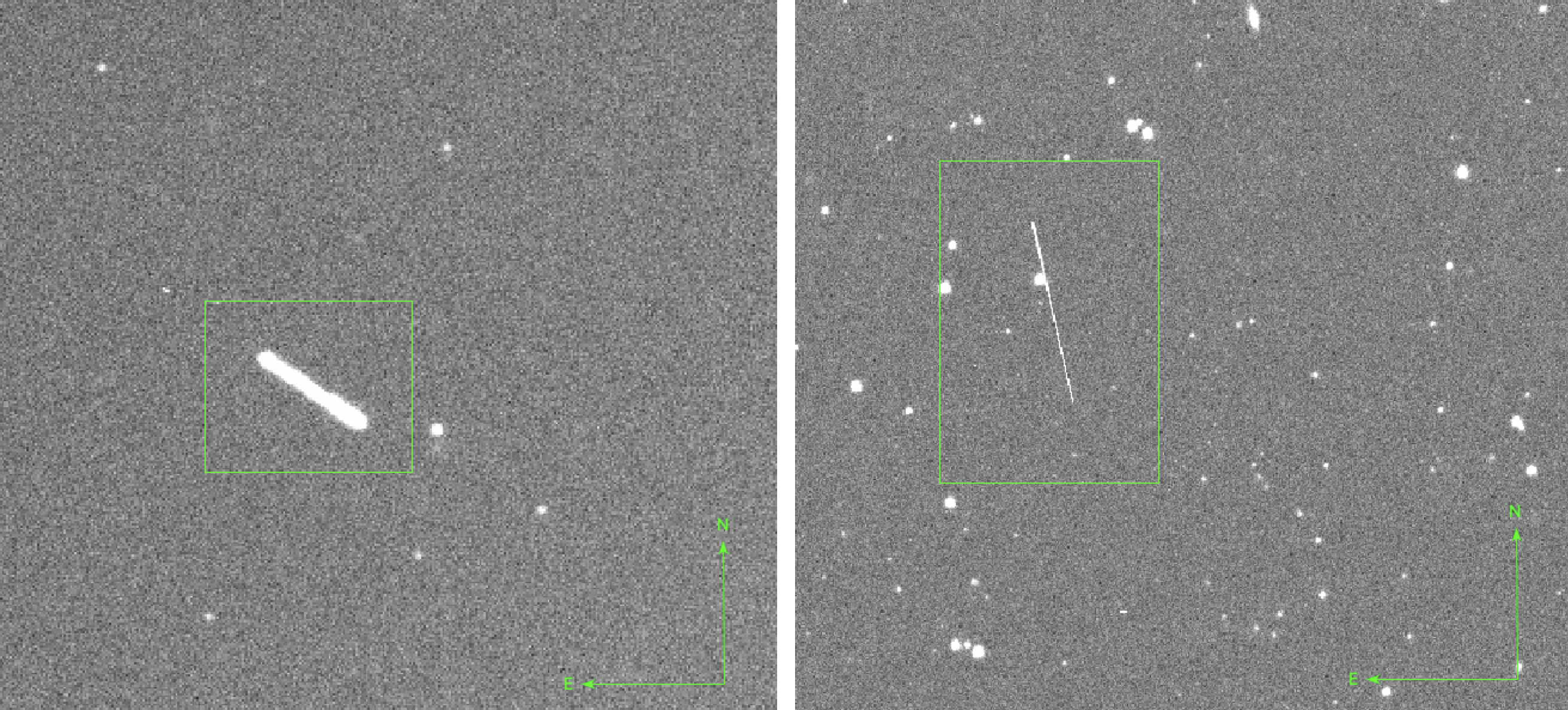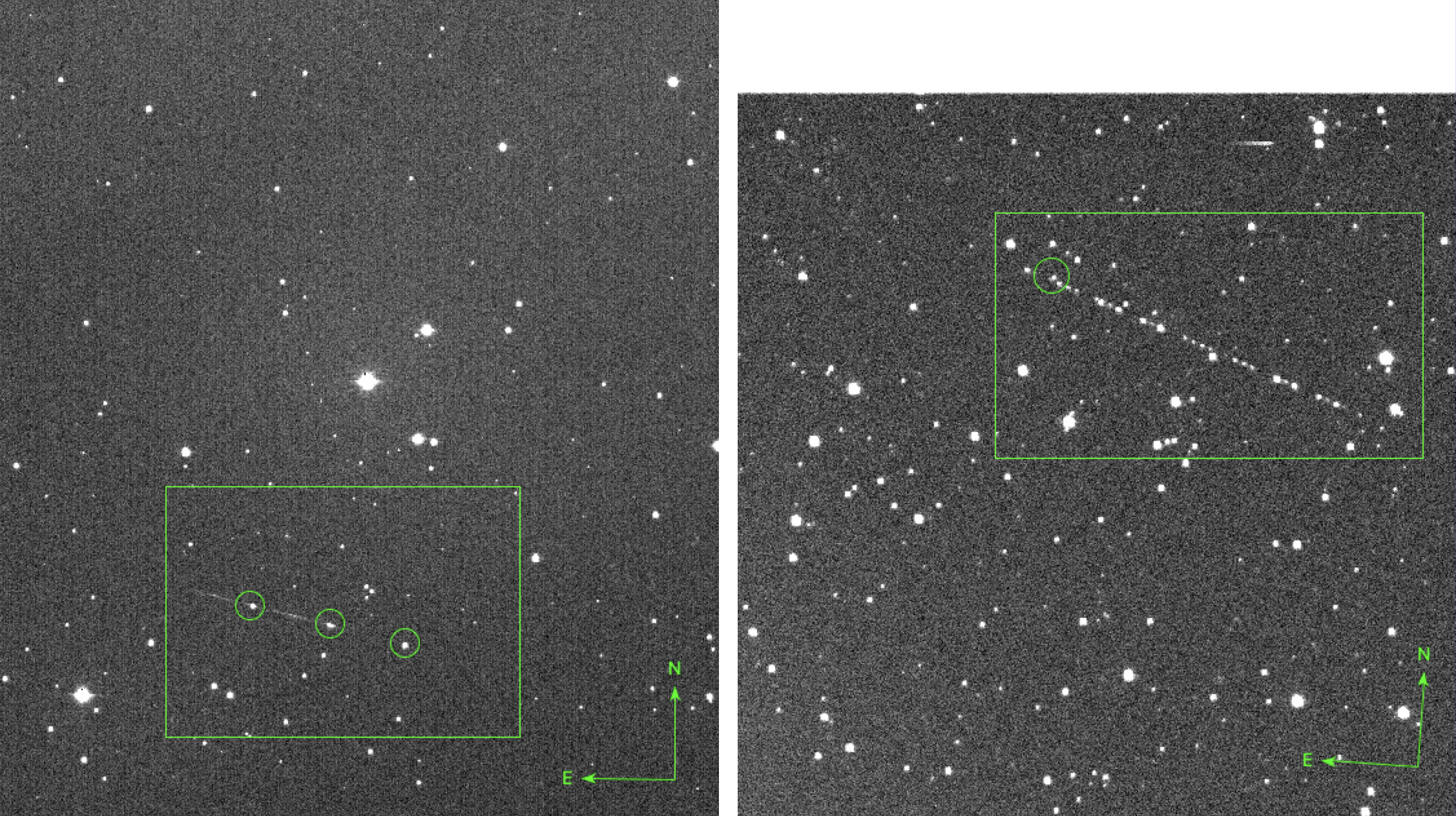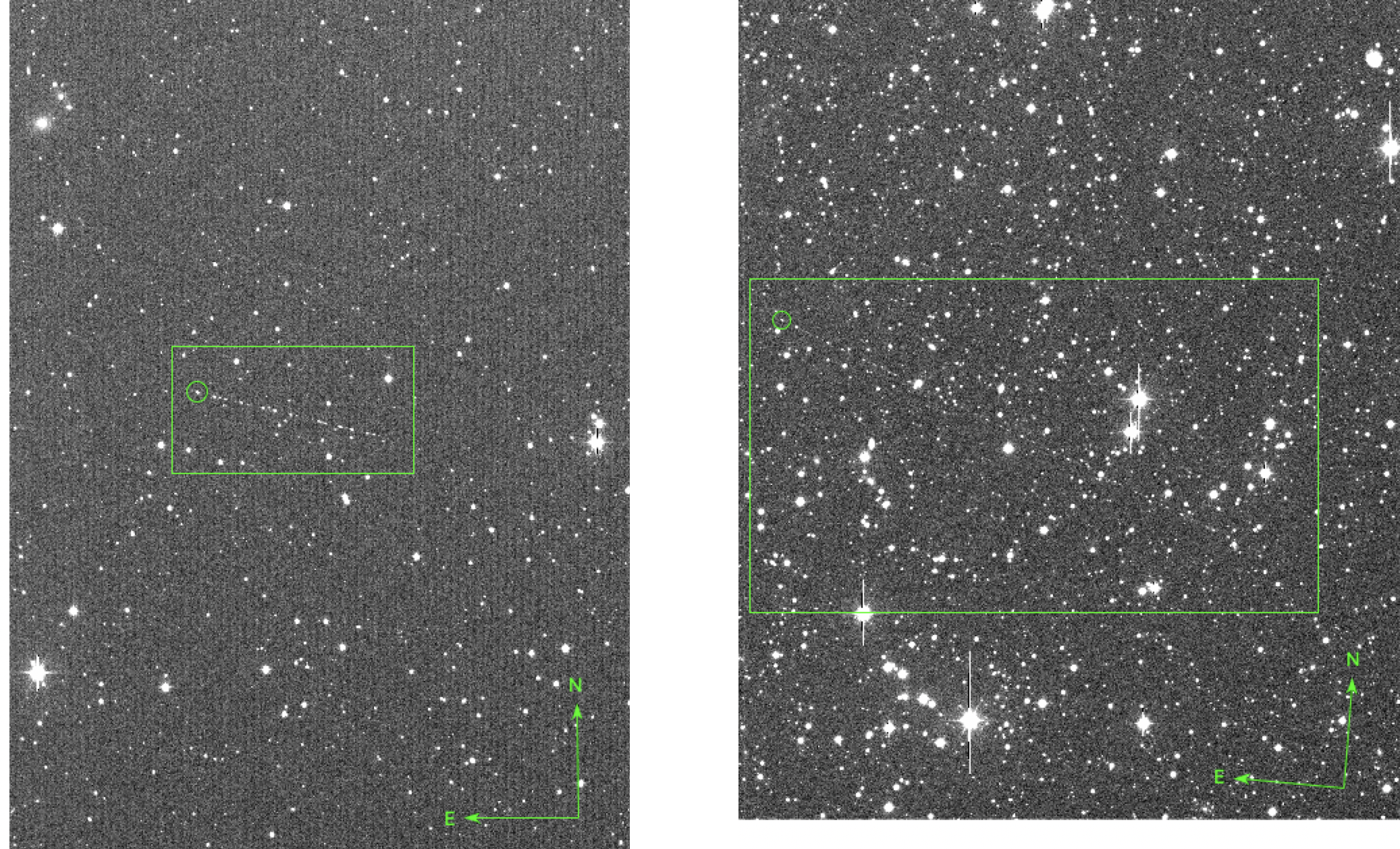A Cost-Effective Search for Extraterrestrial Probes in the Solar System (2510.17907v1)
Abstract: For centuries, astronomers have discussed the possibility of inhabited worlds - from Herschel's 18th-century observations suggesting Mars may host life, to the systematic search for technosignatures that began in the 1960s using radio telescopes. Searching for artifacts in the solar system has received relatively little formal scientific interest and has faced significant technical and social challenges. Automated surveys and new observational techniques developed over the past decade now enable astronomers to survey parts of the sky for anomalous objects. We briefly describe four methods for detecting extraterrestrial artifacts and probes within the Solar System and then focus on demonstrating one of these. The first makes use of pre-Sputnik images to search for flashes from glinting objects. The second method makes use of space-borne telescopes to search for artificial objects. A third approach involves examining the reflectance spectra of objects in Earth orbit, in search of the characteristic reddening that may imply long-term exposure of metallic surfaces to space weathering. We focus here on a fourth approach, which involves using Earth's shadow as a filter when searching for optically luminous objects in near-Earth space. We demonstrate a proof-of-concept of this method by conducting two searches for transients in images acquired by the Zwicky Transient Facility (ZTF), which has generated many repeated 30-second exposures of the same fields. In this way, we identified previously uncatalogued events at short angular separations from the center of the shadow, motivating more extensive searches using this technique. We conclude that the Earth's shadow presents a new and exciting search domain for near-Earth SETI.
Paper Prompts
Sign up for free to create and run prompts on this paper using GPT-5.
Top Community Prompts
Explain it Like I'm 14
Overview
This paper is about a new, low-cost way to look for possible extraterrestrial (ET) probes or artifacts in our own Solar System. Instead of listening for radio signals or laser beams from distant stars, the authors show how we can use existing telescope images to search nearby for unusual, short-lived lights in space. Their main idea is to use Earth’s shadow as a “clean” place to look, because most human-made satellites don’t reflect sunlight there.
Key Questions
The researchers asked simple, practical questions:
- Where can we search in the sky to avoid confusing reflections from human satellites?
- Can we find brief, unusual lights (“transients”) that might come from active, self-lit objects in near‑Earth space?
- Can we do this cheaply using data we already have?
- If we see something odd, how can we tell if it’s a known natural object (like an asteroid) or something new?
What They Did (Methods)
The team outlined four ways to search for ET artifacts, and then focused on one of them:
- Looking at old, pre-satellite photos: Like checking old family albums from before streetlights were installed—these sky images (before Sputnik, in the 1950s or earlier) help us find strange flashes without the clutter of modern satellites.
- Using space telescopes (like Kepler or TESS): These are cameras outside Earth’s atmosphere that can spot unusual events further out in the Solar System.
- Checking how objects reflect light (“color-coded clues”): Long‑exposed metal surfaces in space can get “reddened” over time. If something looks more red than usual and doesn’t match known materials, it could be interesting.
- Using Earth’s shadow as a filter (the method they tested): Imagine Earth casting a cone-shaped night shadow into space. Inside the darkest part of that shadow, satellites can’t reflect direct sunlight. So, if you see a light there, it’s less likely to be just sunlight bouncing off a satellite. It could be a self‑lit object, a rocket burn, or something else.
To try this, they analyzed many images from the Zwicky Transient Facility (ZTF), a big sky survey that takes lots of 30‑second pictures of the same areas. They did two kinds of searches:
- A manual check of a smaller sample near the center of Earth’s shadow.
- A larger, automated search that used computer software to find bright spots in images, measure their shape (round or streaky), and compare their positions to catalogs of known stars and asteroids. If a bright spot didn’t match a known object and only appeared briefly, it was flagged as a candidate.
Terms explained in everyday language:
- “Transient”: A short-lived flash or dot of light that appears in one image and then disappears.
- “Geosynchronous orbit”: A ring around Earth where satellites seem to hover over the same spot because they orbit once per day, roughly 35,786 km up.
- “Glint”: Sunlight reflecting off a shiny object, like a mirror flash.
- “Catalog matching”: Checking if a detected object is already listed in databases of stars and asteroids.
- “Streaking”: When a moving object appears as a line in a long exposure, rather than a dot.
What They Found and Why It Matters
Main results:
- Most of the brief lights they saw inside Earth’s shadow were explained by known natural objects, especially asteroids moving across the images.
- They did find one interesting uncatalogued moving object that looked like an asteroid but wasn’t matched in the databases at the time. It is likely natural, but it shows the method can surface new targets.
- They saw examples of groups of asteroids moving together, which looks unusual at first but is consistent with normal solar system behavior.
Why this is important:
- The Earth’s shadow method works as a clever “filter” to remove many false alarms caused by satellite reflections.
- Using existing survey images makes the search cost-effective—no need for new, expensive missions.
- Even though they didn’t find clear ET artifacts, they proved the approach can sift through huge data sets and highlight real, short-lived events worth follow‑up.
What It Means Going Forward
This paper is a proof‑of‑concept: a careful first test showing that Earth’s shadow is a promising place to look for self‑lit objects near Earth. The method helps avoid the “noise” from human satellites and can be scaled up with:
- More images and coordinated observations from different telescopes to triangulate distances (figuring out how far away an object is).
- Spectroscopy (splitting the light into colors) to check what materials an object is made of. Strange, unknown materials could be clues to artificial origin.
- Better automated tools to flag clusters of short flashes, streaks, or trains of dots that repeat.
Bottom line: This is a smart, affordable step toward searching our immediate cosmic neighborhood. Even if most detections are natural, the Earth’s shadow gives SETI researchers a new, cleaner hunting ground for unusual lights that might, one day, hint at visiting probes.
Knowledge Gaps
Knowledge gaps, limitations, and open questions
Below is a single, actionable list of what remains missing, uncertain, or unexplored in the paper, phrased to guide future work:
- Quantify the detection sensitivity and completeness of the Earth’s-shadow method (as functions of magnitude, flash duration, angular speed, and position within the umbra/penumbra), e.g., via synthetic source injection and recovery tests.
- Replace the fixed “safe radius” heuristic (ρ < 6°) with a validated, time- and location-dependent shadow geometry model that incorporates seasonal variation, observatory latitude/longitude, and atmospheric refraction, and test it against real glint statistics.
- Measure and model contamination inside the shadow from moonlight-reflected glints, atmospheric refraction fringe (γ ≈ 2°), zodiacal light, and twilight, and develop discriminators/filters for these backgrounds.
- Provide quantitative false-positive rates for the automated pipeline (cosmic rays, amplifier cross-talk, CCD edge artifacts, aircraft, meteors, satellites with intrinsic light sources) with precision/recall estimates and a vetted taxonomy of artifact classes.
- Implement robust kinematic discrimination beyond the “east-to-west asteroid” assumption: derive direction-of-motion, angular speed distributions, and trajectory linking across epochs to separate heliocentric objects from geocentric or atmospheric phenomena.
- Develop a multi-site, time-synchronized triangulation protocol (baselines, timing accuracy, pointing) to estimate range and orbits for streaking/flashing candidates, and demonstrate it on real objects.
- Establish spectroscopic follow-up procedures for self-luminous candidates (trigger criteria, rapid-response instrumentation, expected spectral features), and test feasibility at g/r magnitudes ~17–21.
- Integrate real-time satellite ephemerides beyond public USSTRATCOM listings, including geosynchronous station-keeping burns and classified assets, to estimate and reduce false-positive rates from human spacecraft with intrinsic optical emissions.
- Address ZTF cadence limitations (mostly 2–3 exposures per field per night, 30 s each) by proposing higher-cadence observing strategies or dedicated shadow-pointed campaigns to increase sensitivity to clustered or periodic flashes.
- Model plausible technosignature behaviors (flash cadence, duty cycle, spectral lines/continua, polarization, formation-flying geometries) to derive optimal search features and thresholds and to enable hypothesis testing.
- Complete the analysis for the control sample C (outside the shadow) with rigorous rate comparisons to sample B (inside the shadow) to establish statistical significance of any excesses or null results.
- Validate the automated segmentation-based transient detection (photutils) with controlled simulations; report performance across seeing, background gradients, depth variations, and bandpasses to ensure robustness.
- Revisit the “nearest-neighbor” filter that removes detections near prior unmatched detections; redesign it to retain physically meaningful clustered transients and trains of flashes while suppressing static/slow sources.
- Perform orbit determination/tracklet linking for the reported uncatalogued object, cross-check with MPC/Horizons, and schedule targeted follow-up to resolve whether it is a near-Earth asteroid, a spacecraft, or an artifact.
- Extend the search to NIR bands to capture likely satellite laser communications and other non-visible emissions while maintaining shadow constraints and contamination controls.
- Operationalize the “reddened debris spectra” approach: compile a vetted list of “ownerless” orbital objects, define spectral SNR/resolution requirements, and build a laboratory reference library for space-weathered artificial materials.
- Systematically analyze TESS/Kepler archival data for multi-camera “simultaneous” transients with cross-detector coincidence checks to suppress cosmic rays and instrument systematics; quantify magnitude-limited completeness (~12 mag for TESS).
- Explicitly separate LEO luminous sources (e.g., LEDs, LIDAR, laser ranging, thrusters) from atmospheric phenomena via parallax, altitude estimation, and kinematic constraints; report expected rates and outlier behaviors.
- Design and test the proposed ExoProbe-style triangulation network (hardware, station distribution, clock synchronization, data formats) using controlled targets to validate range resolution and orbit recovery in practice.
- Define ethical and operational protocols to avoid misidentifying national security assets, including notification pathways, data-sharing constraints, and red-teaming against known human systems.
- Optimize scheduling for shadow-centered fields (predictive targeting of the subantisolar point, maximize overlap with umbra regions, cadence planning) for current and upcoming surveys (including Rubin LSST).
- Estimate expected ET probe population densities and plausible orbital niches (GEO, lunar distance, Earth–Moon Lagrange points, heliocentric near-Earth orbits), to prioritize sky regions and time budgets for targeted searches.
- Quantify GEO/HEO thruster plume visibility rates (brightness, duration) to calibrate the likelihood of human false positives and to inform temporal filters for short-lived emission events.
- Empirically verify the refraction fringe width (γ) and its wavelength dependence; update shadow-boundary models per bandpass (g vs r vs NIR) to refine glint-exclusion radii.
- Examine Lagrange points and cislunar space as special search domains inside or adjacent to the shadow cone; derive angular velocity expectations and detection strategies for these regimes.
- Develop ML classifiers trained on labeled artifacts vs astrophysical transients vs satellites, incorporating morphology, kinematics, spectral cues, and contextual metadata to reduce manual vetting load.
- Implement multi-epoch linking for unmatched detections to form tracklets and estimate motion vectors; report linking completeness and false-link rates under realistic survey cadence and depth variations.
- Mitigate “Category 1” issues (depth differences, variable seeing/backgrounds) by adopting per-image photometric calibrations and adaptive thresholds; quantify how these factors affect transient detectability.
- Report the sky coverage, time-on-shadow, and effective search volume probed; convert null results into upper limits on the density or luminosity function of self-luminous near-Earth ET artifacts.
- Test the reliability of “east-to-west” movement rules against simulated and real asteroid fields across ecliptic latitudes; provide a principled motion-based filter rather than heuristic direction assumptions.
- Re-investigate the 1952 Palomar triple-transient plate event with modern instruments (targeted monitoring, multi-site coverage, spectroscopy) to resolve astrophysical vs instrumental vs exotic interpretations.
- Determine the magnitude limits for detecting sub-second flashes in 30 s integrations under typical seeing and backgrounds; provide a closed-form detectability model and empirical validation.
- Formalize the VASCO-style citizen science pipeline for glint detection in pre-Sputnik plates (defect modeling, alignment criteria, verification workflows), and publish protocols for reproducibility.
- Plan for LSST data integration (alert streams, image differencing artifacts, rolling cadence) and define shadow-constrained search modes compatible with Rubin operations and data rights.
Practical Applications
Immediate Applications
Below is a curated set of practical, deployable use cases that leverage the paper’s methods and findings right now.
- Shadow-aware observation planning for transient surveys
- Sector: Astronomy, Software
- Use case: Integrate an “Earth’s shadow” filter into nightly schedulers for optical surveys (e.g., ZTF, ATLAS, Pan-STARRS, and upcoming Rubin/LSST) to prioritize fields within the dark full shadow (DFS) and minimize satellite glints.
- Tools/workflows:
earthshadowlibrary for per-exposure shadow geometry; scheduler hooks to apply a dynamic shadow-radius cutoff (e.g., 6°). - Assumptions/dependencies: Accurate time stamps, site location, and ephemerides; sufficient cadence and depth (short exposures help minimize streak lengths).
- Pipeline-level filtering to reduce false positives from human satellites
- Sector: Astronomy, Software
- Use case: Incorporate morphological and catalog-matching filters (e.g., the NEOrion workflow demonstrated) in transient pipelines to reduce false alerts and separate point-source flashes from streaks.
- Tools/workflows:
photutilssegmentation; metrics such as elongation, ellipticity, taper; nearest-neighbor checks; Pan-STARRS/SDSS cross-match; revisit-count heuristics. - Assumptions/dependencies: Access to survey FITS headers, reliable catalog coverage, robust ingestion of multiple catalogs (Pan-STARRS, SDSS, Gaia).
- Shadow-domain minor body discovery and confirmation
- Sector: Astronomy, Space Situational Awareness (SSA)
- Use case: Exploit in-shadow imaging to identify uncatalogued asteroids or slow movers with fewer glints, as demonstrated by the uncatalogued candidate found in ZTF.
- Tools/workflows: NEOrion-like detection; cross-checks with JPL Horizons; follow-up astrometry; alerting to MPC.
- Assumptions/dependencies: Sufficient revisit coverage to disambiguate asteroid-like motion; control for atmospheric streaks (meteors) via orientation and speed filters.
- Targeted searches for clustered or formation-like motion in shadow fields
- Sector: Academia (SETI), Astronomy
- Use case: Flag and review in-shadow detections of multiple co-moving objects (clusters, trains) distinct from typical east-to-west asteroid motion. Prioritize formation-like kinematics for follow-up.
- Tools/workflows: Grouping by angular velocity and direction; clustering analysis; ephemeris-based exclusion of known minor bodies; spectroscopic follow-up.
- Assumptions/dependencies: Good cadence; multi-band imaging for color/reflectance; robust asteroid cross-matching to reduce ambiguity.
- Use of pre-Sputnik digitized plates for glint train identification
- Sector: Academia (SETI), Education, Citizen Science
- Use case: Launch citizen-science campaigns (VASCO-style) to mine archival photographic plates (Palomar, Harvard, Lick, Carte du Ciel) for multi-transient alignments and triple events without modern satellite contamination.
- Tools/workflows: Public plate archives; annotation interfaces; volunteer training assets; follow-up digitization standards.
- Assumptions/dependencies: Plate metadata quality; control for defects; reproducible criteria for alignment significance.
- Anomaly scrubbing for UAP and exotic transient research
- Sector: UAP Research, Academia
- Use case: Adopt Earth’s shadow filtering and morphological metrics to systematically eliminate satellite glints and common artifacts when vetting exotic optical events.
- Tools/workflows: Shadow-radius gate; elongation/taper filters; atmospheric exclusion (height/speed heuristics); triangulation planning for repeats (see ExoProbe concept).
- Assumptions/dependencies: Coordination across observatories; rapid alerting for repeat captures; precise time synchronization.
- Best-practice guidance for astrophotographers and small observatories
- Sector: Education, Daily Life
- Use case: Provide simple guidance to schedule imaging near the shadow center to reduce satellite streaks and glints in long exposures.
- Tools/workflows: Shadow-center calculators; mobile apps or web tools for planning; community tutorials.
- Assumptions/dependencies: Availability of user-friendly shadow calculators; clear skies; basic understanding of sky geometry.
- Preliminary cataloging of “in-shadow transient candidates”
- Sector: Academia, Astronomy
- Use case: Create a sharable repository of in-shadow, unmatched detections with standardized metadata (position, morphology, S/N, revisit counts) to enable community vetting and follow-up.
- Tools/workflows: Open data formats; APIs for ingestion and query; integration with IRSA and MPC workflows.
- Assumptions/dependencies: Sustained data curation; spam/false-positive control; clear criteria for escalation to follow-up.
Long-Term Applications
These applications require further research, instrumentation, scaling, or policy development before broad deployment.
- Distributed Earth-shadow SETI network with triangulation capability
- Sector: Academia (SETI), Astronomy, Software
- Use case: Deploy a global network of synchronized, wide-field telescopes focused on the shadow cone to capture luminous transients and enable immediate triangulation for range and orbital estimation.
- Tools/workflows: Time-synchronized imaging (GPS-disciplined clocks), real-time cross-site correlation, baseline planning, automated orbit reconstruction.
- Assumptions/dependencies: Sufficient baselines and simultaneous coverage; robust event brokers; funding and institutional coordination.
- Space-based shadow-domain watchers beyond geosynchronous orbit
- Sector: Space Missions, Academia
- Use case: Repurpose or design small satellites or piggyback payloads to observe the shadow cone from space, increasing sensitivity and eliminating atmospheric noise—complementing ground networks.
- Tools/workflows: High-cadence, wide-field optical sensors; on-board filtering; cross-linking with ground networks; anomaly alert protocols.
- Assumptions/dependencies: Launch opportunities; radiation-hard sensors; autonomous detection and downlink strategies.
- Spectroscopic screening of “reddened, unowned” orbital debris
- Sector: SSA, Materials Science, Academia (SETI)
- Use case: Systematically collect solar reflectance spectra of the most reddened, non-attributed orbital objects to detect unknown absorption/emission features indicative of unusual materials or long-term space weathering.
- Tools/workflows: Target selection via color indices; solar spectrum subtraction; material library matching; joint campaigns with radar/laser ranging.
- Assumptions/dependencies: Reliable ownership databases (USSTRATCOM gap for classified assets); adequate SNR for faint objects; standardized spectral pipelines.
- Standards and policy for “optical emissions registry” and quiet-hours
- Sector: Policy, SSA, Satellite Industry
- Use case: Develop frameworks requiring satellite operators to register visible-light sources (lasers, LEDs, thrusters) and publish emission windows, enabling astronomers to plan shadow-domain observations with lower false-positive risk.
- Tools/workflows: International registry integration (e.g., COPUOS/ITU liaison); APIs for real-time emission notices; observatory schedulers consuming registry feeds.
- Assumptions/dependencies: Industry participation; handling of classified missions; enforcement mechanisms.
- “Shadow Mode” in large surveys (Rubin/LSST, Roman) with anomaly pipelines
- Sector: Astronomy, Software
- Use case: Build dedicated modes and pipelines in major surveys for shadow-centric scans, adapting detection thresholds, morphology filters, and anomaly routing for potential technosignature events.
- Tools/workflows: Shadow-aware schedulers; advanced ML for anomaly detection using NEOrion-like features; event brokers for rapid follow-up.
- Assumptions/dependencies: Survey operations flexibility; compute resources; comprehensive false-positive modeling.
- Formation-motion analytics and anomaly detection in heliocentric space
- Sector: Academia (SETI), SSA, Software
- Use case: Develop ML models to identify non-asteroidal formation flying (e.g., multiple objects moving with similar angular speeds but nonstandard orientations) in shadow and non-shadow domains.
- Tools/workflows: Time-series position features, motion clustering, generative models for non-Keplerian patterns; integration with ephemeris filters.
- Assumptions/dependencies: Large labeled datasets; synthetic training sets for rare classes; robust validation against known asteroid clusters.
- Coordinated follow-up missions to intercept or characterize candidates
- Sector: Space Missions, Robotics
- Use case: If persistent candidates arise (self-luminous or unusual spectra), design small interceptor missions or cislunar cubesats to approach, image, and measure objects in situ.
- Tools/workflows: Rapid mission design; cislunar navigation; optical and spectroscopic payloads; international collaboration for data sharing.
- Assumptions/dependencies: Verified orbital solutions; clear scientific and safety protocols; mission funding and rapid launch capability.
- Expanded archival mining with modern defect and artifact classification
- Sector: Academia, Software, Education
- Use case: Scale citizen science to larger plate archives with advanced artifact classification and alignment significance tests (for multi-transient trains), combining human and ML review.
- Tools/workflows: Cloud hosting of plates; interactive tooling; ML-assisted triage; provenance tracking for candidates.
- Assumptions/dependencies: Plate digitization quality; funding for computation and storage; sustained volunteer engagement.
- Risk assessment and governance frameworks for technosignature claims
- Sector: Policy, Academia
- Use case: Build evidential standards and governance for claims arising from shadow-domain detections (e.g., repeatability, triangulation, spectroscopy, material inference), avoiding premature interpretations.
- Tools/workflows: Multi-tiered confidence scales; public communication protocols; independent replication mechanisms.
- Assumptions/dependencies: Community consensus; cross-institutional review; transparency and data accessibility.
Cross-cutting assumptions and dependencies
- Most human satellites lack persistent visible intrinsic emissions; exceptions (LIDAR/NIR comms, LEDs, propulsion) are primarily LEO and rare—yet must be registered and filtered.
- Accurate modeling of the Earth’s shadow (umbra/penumbra, refraction fringe) and observer geometry is essential; the usable “safe radius” changes with season and observer position.
- High-cadence imaging and precise timing are crucial to identify short-lived flashes and enable triangulation.
- Moonlight scattering and atmospheric phenomena (meteors, aircraft) can produce confounders; morphological and kinematic filters, plus cross-site validation, mitigate risk.
- Catalog completeness and real-time cross-matching (Pan-STARRS, SDSS, Gaia, MPC, JPL Horizons) determine the reliability of “unmatched” classification.
- For spectral inference of materials, robust subtraction of solar reflectance and comparison against comprehensive material libraries are required.
These applications collectively translate the paper’s innovations—Earth-shadow filtering, archival mining, space-borne datasets, reflectance-based screening, and automated morphological pipelines—into practical workflows for astronomy, SSA, policy, and public engagement, while laying groundwork for more ambitious, triangulated, and space-based SETI searches.
Glossary
- Absorption features: Distinct dips in a reflectance or transmission spectrum caused by specific materials absorbing light at characteristic wavelengths. "a pattern of absorption features that are characteristic of the surface materials"
- Antisolar point: The point on the celestial sphere directly opposite the Sun as seen from a given observer. "parallax of the shadow center with respect to the antisolar point is "
- Arcsecond (arcsec): An angular measurement equal to 1/3600 of a degree, commonly used to express small angles on the sky. "At a few times the distance of the Moon, we might search instead for streaks inside the shadow ... indicating angular velocities arcsec sec."
- Astronomical unit (au): A standard measure of distance in astronomy equal to the average distance between Earth and the Sun (~149.6 million km). "At distances far enough from Earth, such as those greater than or equal to 0.01 astronomical units (au), any detectable flashes will occur from beyond the Earth's shadow cone."
- Dark full shadow (DFS): The central, darkest part of Earth’s umbra where direct sunlight is completely blocked. "The full shadow consists of a dark core (the ``dark full shadow'' or DFS)"
- E(B - V) (Galactic extinction): A color-excess metric quantifying interstellar dust reddening and extinction in magnitudes. "we ignored those fields with a Galactic extinction higher than E(B - V) = 0.3 mag"
- Ecliptic latitude (β): Angular distance from the ecliptic plane, used to locate positions relative to the Solar System’s plane. "Control sample (ecliptic pole; ecliptic latitude () exceeds ; all fields well outside the shadow)"
- Ellipticity: A measure of how elongated an object’s light profile is, often defined via second moments. "Ellipticity (): ; near zero for radially-symmetric objects"
- Elongation: The ratio of an object’s major to minor axis sizes, indicating how stretched its image appears. "Elongation (): "
- FWHM (Full Width at Half Maximum): The width of a profile at half its maximum value, used to quantify image resolution and seeing. "We define the
taper'' as the ratio of the FWHM of the minor axis of the segment () to theseeing FWHM'' reported in the FITS meta data." - Geosynchronous orbit (GSO): An orbit around Earth with a period of one sidereal day, causing a satellite to appear fixed over a longitude. "geosynchronous orbits (GSO; approximately 35,700 km)"
- Gini coefficient: A concentration metric applied to pixel intensities, indicating how centrally concentrated light is within a segmented source. "Gini coefficient (): Gini coefficient of intensities in the segment."
- Heliocentric orbit: An orbit around the Sun rather than around Earth or another body. "point sources that cannot be identified as planetesimals in heliocentric orbit"
- J2000 (epoch): A standard celestial reference epoch corresponding to 2000 January 1.5 TT for astronomical coordinates. "We use the Julian Date and the J2000 coordinates of each transient"
- JPL Horizons: A NASA system providing solar system ephemerides for objects like asteroids, planets, and spacecraft. "no match when queried using the JPL Horizons database"
- Julian Date (J.D.): A continuous count of days used by astronomers to timestamp observations precisely. "We use the Julian Date and the J2000 coordinates of each transient"
- LEO (Low Earth Orbit): Orbits relatively close to Earth (typically 160–2000 km altitude), where objects move quickly across the sky. "The Earth's shadow is much larger at Low Earth Orbit (LEO)"
- LIDAR: A remote sensing technique that uses laser light; in space contexts used for ranging and atmospheric profiling. "atmospheric LIDAR"
- Limiting magnitude: The faintest apparent magnitude detectable in an observation or survey under given conditions. "reaches a limiting magnitude of ."
- Micrometeorites: Tiny meteoritic particles that impact surfaces in space, contributing to weathering and reflectivity changes. "dust particles, cosmic rays, and micrometeorites"
- Monochromatic emission line: A single-wavelength spectral feature, potentially indicative of laser emission. "leave a monochromatic emission line in stellar spectra"
- Near-infrared (NIR): The portion of the infrared spectrum just beyond visible red light, often used in communications and sensing. "(i) lasers used for communication (usually NIR) or laser ranging and atmospheric LIDAR"
- Omnidirectional (transmission): Emission or broadcast radiating in all directions rather than being tightly beamed. "It should be noted that these limits apply to continuously transmitting and omnidirectional or Earth-directed transmitters."
- Pan-STARRS (PS1): An astronomical survey and its associated catalogs used for source matching and reference. "the Pan-STARRS (Panoramic Survey Telescope and Rapid Response System, catalog PS1 DR2; \cite{kaiser2002pan,flewelling2020pan})"
- Parallax: The apparent displacement of an object due to a change in the observer’s point of view; used here for shadow geometry. "parallax of the shadow center with respect to the antisolar point is "
- Parsecs (pc): A unit of distance (3.26 light-years) commonly used in astronomy. "concluding that less than \% of all systems within 50 pc have radio transmitters this powerful."
- Penumbra: The partially shaded region of a shadow where only part of the light source is obscured. "The shadow of the Earth consists of the penumbra and umbra or ``full shadow''"
- Reddening: The process by which scattering and absorption make objects appear redder, often due to dust or weathering. "leading to a reduction in its reflectivity and causing a reddening of the object"
- Refraction fringe: The bright fringe at the edge of Earth’s umbra caused by atmospheric refraction of sunlight. "The lightest shading marks the ``refraction fringe'' into which sunlight is refracted by the atmosphere (angular size )."
- SETI luminosity function: A distribution describing the prevalence of artificial emitters as a function of their luminosity. "placing limits on the luminous end of the SETI luminosity function."
- Space weathering: Alteration of a surface in space due to micrometeoroid impacts, radiation, and dust, affecting reflectance. "the characteristic reddening that may imply long-term exposure of metallic surfaces to space weathering."
- Specular reflection: Mirror-like reflection producing glints, as from smooth metallic surfaces. "specular reflections from artificial objects"
- Subantisolar point (SAP): The point on Earth’s surface directly opposite the Sun at a given time. "(a) Shows the shadow geometry for an observer on the Earth's surface beneath the antisolar point (the ``subantisolar point'' or SAP)"
- Technosignatures: Observable indicators of technology from extraterrestrial civilizations. "the systematic search for technosignatures that began in the 1960s using radio telescopes."
- Transient: A short-lived astronomical event that appears and disappears over brief timescales. "Previous work has used the Earth's shadow to search for real astrophysical transients lasting only a few seconds"
- Triangulation: Determining an object’s distance and position by observing it from multiple locations. "Determining the distance to streaking objects will require triangulation"
- Umbra: The fully shadowed region where the light source is completely blocked. "The shadow of the Earth consists of the penumbra and umbra or ``full shadow''"
- Zwicky Transient Facility (ZTF): A wide-field survey project designed to detect transient phenomena in the sky. "The Zwicky Transient Facility \citep[ZTF;] []{Bellm2019,Graham2019} is an untargeted wide-field transient survey"
Collections
Sign up for free to add this paper to one or more collections.
